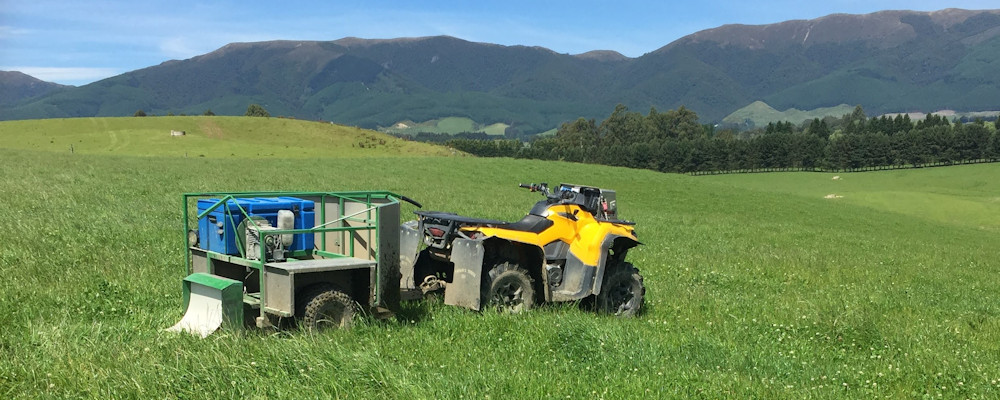Grass measuring: what role does it play?
The optimisation of cattle or sheep forage diet is a key consideration for farms that rely on grass and clover as a significant portion of their livestock’s diet.
Given the substantial investment in land and the importance of maximising grass and clover growth, employing independent grass measuring services has become a logical and valuable decision-making tool for farm management. By using farm-specific data, and understanding the dynamics of pasture growth, your decision-making team can take timely and optimal action.
Specific grass measuring expertise becomes a critical part of the system alongside independent
nutritionists, hoof trimmers, and vets.
Understanding the benefits of grass measuring
- Informed decision-making: Independent grass measuring services provide farm-specific data, such as grass cover per field, residual grass, and available grass, enabling your team to make well-informed management decisions. This includes determining when to move stock, protecting against drought, building grass reserves, optimising stocking rates, and identifying unproductive fields.
- Enhanced herd performance: Optimising the forage diet by maximising grass and clover growth leads to improved herd performance. By ensuring cows are fully fed with high-quality forage, the farm can expect enhanced milk production, growth rates, and overall animal health.
- Sustainable grass production: By striving to grow and harvest as much grass as sustainably possible from home, the farm reduces the reliance on external feed sources, improving sustainability and reducing costs. Maximising on-farm grass production supports a more self-sufficient and economically-efficient farming system.
- Independent input and expertise: The involvement of independent contractors, such as grass measuring services, brings valuable outside expertise and perspectives into the farm’s decision-making process, particularly in family businesses.
- Consistency and independence: Outsourcing grass monitoring to independent contractors ensures consistency and objectivity in the data collection and analysis. The farm benefits from the consistent and reliable measurements provided by an outside party, allowing for more accurate monitoring of grass cover and effective pasture management.
- Reinvestment in machinery and software: By using the services of an independent contractor, the farm can benefit from contractor’s ability to reinvest in specialised machinery and software at a faster rate than if the farm were to acquire its own equipment. This allows for access to the latest technology and a more efficient grass measuring processes.
- Increased operational capacity: Independent grass measuring services typically have the capacity to cover a large area, often capable of measuring up to 100 hectares per day. This ensures efficient monitoring of grass cover across the farm, providing comprehensive data for effective decision-making.
What does our grass measuring process look like?
Sampling occurs on a predetermined fixed day or fortnightly basis to ensure accurate measurement of pasture growth. The process involves using the C-Dax pasture meter, which is equipped with 18 infrared light emitters and receivers. These sensors are capable of detecting pasture growth in 20 mm increments.
To conduct the measurements, the C-Dax is attached to the tow ball of a terrain vehicle (ATV) and dragged across the paddocks. The infrared sensors on the C-Dax capture the height of the grass, collecting approximately 200 measurements per second across the entire field area.
These measurements are then averaged to calculate the overall pasture growth for each field. This reading is then used in a formula to determine the final biomass availability in the field, expressed in kilograms of dry matter available per hectare (Kg DM/ha).
With its 18 infrared light emitters and receivers, the C-Dax is capable of capturing over 18,500 readings in a single 500-meter pass across a field. This significant improvement in data collection far surpasses the approximately 60 readings by a traditional RPM (plate meter) covering the same area. The precision of the C-Dax in detecting pasture growth in 20 mm increments ensures more precise and reliable measurements, making it an invaluable tool for accurate assessment of pasture conditions.
Get started with grass measuring



